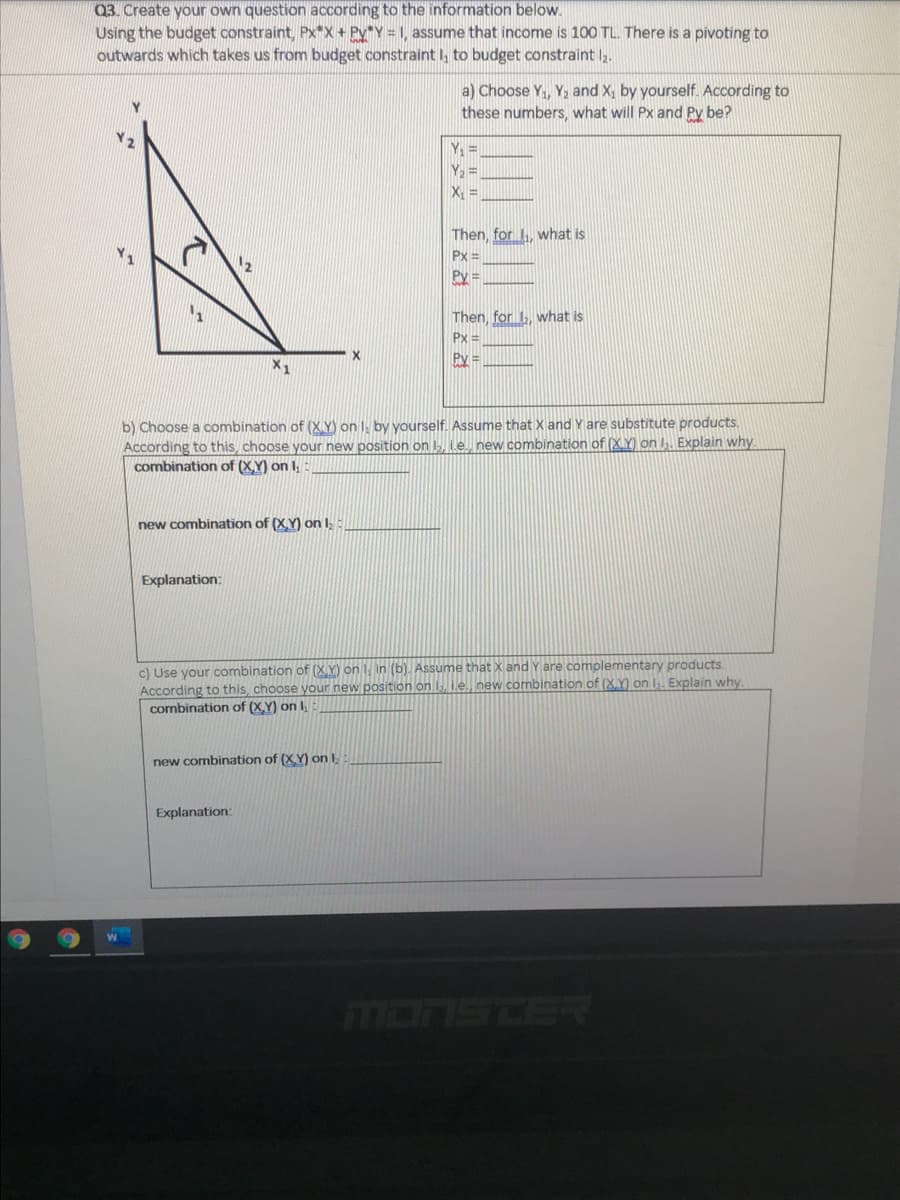03. Create your own question according to the information below. Using the budget constraint, Px*X + Py*Y = 1, assume that income is 100 TL. There is a pivoting to outwards which takes us from budget constraint I, to budget constraint l,. a) Choose Y, Y, and X; by yourself. According to these numbers, what will Px and Py be? Y = X = Then, for 1, what is Px = 12 Py = Then, for 1, what is Px = Py
03. Create your own question according to the information below. Using the budget constraint, Px*X + Py*Y = 1, assume that income is 100 TL. There is a pivoting to outwards which takes us from budget constraint I, to budget constraint l,. a) Choose Y, Y, and X; by yourself. According to these numbers, what will Px and Py be? Y = X = Then, for 1, what is Px = 12 Py = Then, for 1, what is Px = Py
Principles of Economics (MindTap Course List)
8th Edition
ISBN:9781305585126
Author:N. Gregory Mankiw
Publisher:N. Gregory Mankiw
Chapter21: The Theory Of Consumer Choice
Section: Chapter Questions
Problem 1PA
Related questions
Question

Transcribed Image Text:Q3. Create your own question according to the information below.
Using the budget constraint, Px*X + Py*Y = 1, assume that income is 100 TL. There is a pivoting to
outwards which takes us from budget constraint I, to budget constraint l,.
a) Choose Y, Y, and X, by yourself. According to
these numbers, what will Px and Py be?
Y =
Y =
X =
Then, for 1, what is
Px =
Py =
Then, for , what is
Px =
Py =
X1
b) Choose a combination of (X Y) on I, by yourself. Assume that X and Y are substitute products.
According to this, choose your new position on , Le. new combination of (XY on . Explain why.
combination of (X.Y) on I.
new combination of (X.Y) on I
Explanation:
c) Use your combination of (XY) on 1, in (b). Assume that X and Y are complementary products.
According to this, choose your new position onL.ie, new combination of (X.Y) on l. Explain why.
combination of (X.Y) on I.
new combination of (X.Y) on
Explanation:
E3SUDI
Expert Solution
This question has been solved!
Explore an expertly crafted, step-by-step solution for a thorough understanding of key concepts.
Step by step
Solved in 4 steps

Knowledge Booster
Learn more about
Need a deep-dive on the concept behind this application? Look no further. Learn more about this topic, economics and related others by exploring similar questions and additional content below.Recommended textbooks for you

Principles of Economics (MindTap Course List)
Economics
ISBN:
9781305585126
Author:
N. Gregory Mankiw
Publisher:
Cengage Learning


Exploring Economics
Economics
ISBN:
9781544336329
Author:
Robert L. Sexton
Publisher:
SAGE Publications, Inc

Principles of Economics (MindTap Course List)
Economics
ISBN:
9781305585126
Author:
N. Gregory Mankiw
Publisher:
Cengage Learning


Exploring Economics
Economics
ISBN:
9781544336329
Author:
Robert L. Sexton
Publisher:
SAGE Publications, Inc

Principles of Microeconomics
Economics
ISBN:
9781305156050
Author:
N. Gregory Mankiw
Publisher:
Cengage Learning


Principles of Microeconomics (MindTap Course List)
Economics
ISBN:
9781305971493
Author:
N. Gregory Mankiw
Publisher:
Cengage Learning